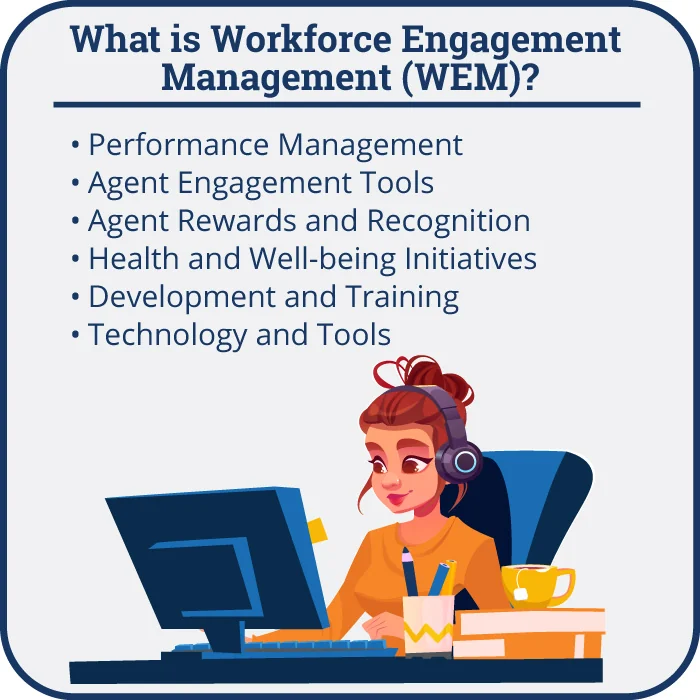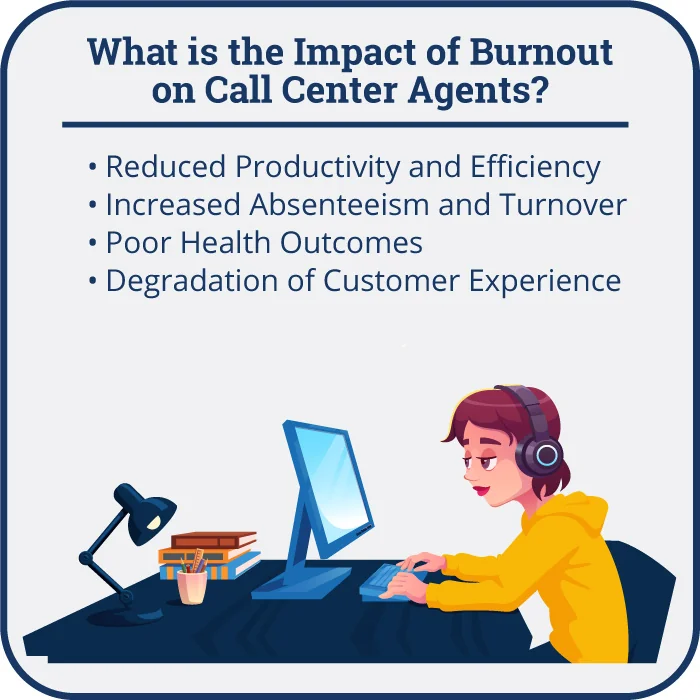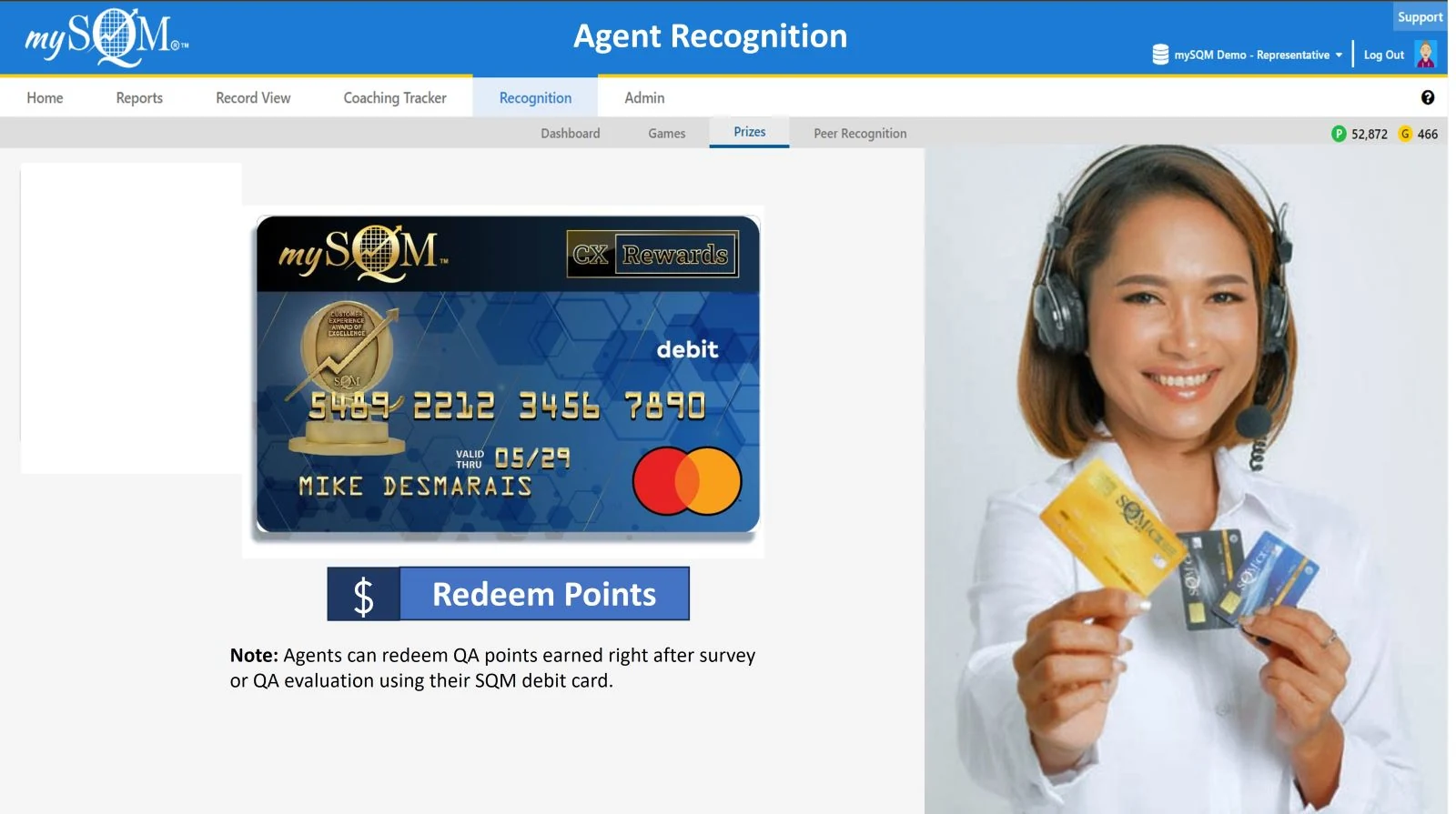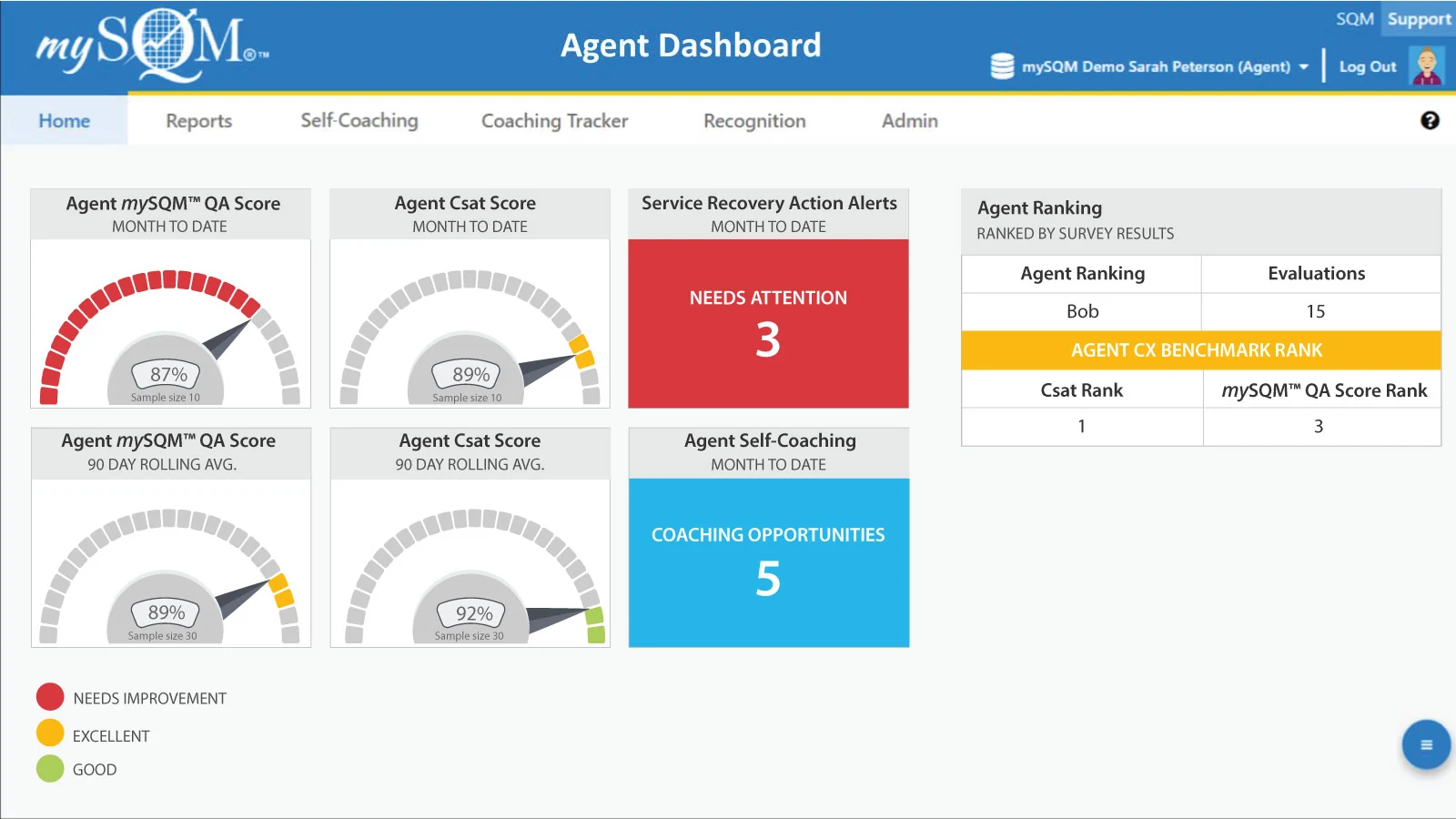In the high-pressure environment of call centers, agent burnout and turnover are persistent challenges that can disrupt operations and increase costs. Call center agents often face demanding workloads, repetitive tasks, and difficult customer interactions, all of which contribute to high levels of stress and job dissatisfaction. This not only affects their well-being but also leads to higher turnover rates, making it difficult for companies to maintain a stable and experienced workforce.
Amidst these challenges, Workforce Engagement Management (WEM) is emerging as a potential solution. WEM aims to improve the overall work experience for agents by focusing on their engagement, well-being, and development. But is this technology-driven approach really the key to reducing burnout and lowering turnover in call centers?
In this blog, we’ll explore how WEM might be the key to creating a healthier, more sustainable work environment for call center agents.
What is Workforce Engagement Management (WEM)?
Workforce Engagement Management (WEM) is a comprehensive approach that focuses on improving the overall experience of employees, particularly in high-stress environments like call centers. It combines various tools and strategies designed to enhance employee satisfaction, productivity, and retention by addressing their needs and well-being.
A robust WEM strategy incorporates several key components, each designed to support and uplift call center agents effectively:

- Performance Management: This component involves setting clear performance goals, tracking progress, and recognizing achievements. Performance management helps agents understand their role within the company and how their work contributes to overall success.
- Agent Engagement Tools: These include surveys, feedback mechanisms, and communication platforms that allow agents to voice their opinions, share concerns, and feel more connected to the organization. Engaged agents are more likely to stay motivated and committed to their work.
- Agent Rewards and Recognition: Financial rewards motivate employees to go the extra mile to resolve calls, especially considering that over 40% of unresolved calls result from an agent having a will issue. Recognition is also important for making agents feel appreciated and increasing their job satisfaction.
- Health and Well-being Initiatives: Introducing programs to support both the physical and mental health of agents. This can include access to counseling services, wellness programs, and more flexible work schedules.
- Development and Training: WEM supports continuous learning by identifying skill gaps and offering targeted training programs. This ensures that agents are not only well-prepared but also feel valued and invested in.
- Technology and Tools: Deploying advanced tools and technologies that simplify tasks and reduce unnecessary stress is crucial. Quality software solutions can automate mundane tasks and streamline communications, making the workload more manageable.
What is the Impact of Burnout on Call Center Agents?
Burnout among call center agents is typically characterized by exhaustion, cynicism, and a feeling of reduced professional efficacy. The primary causes often include excessive workloads, inadequate support from management, repetitive task nature, lack of control over work, and insufficient rewards for effort.

In the fast-paced and often monotonous call center environment, agents can quickly feel overwhelmed, undervalued, and disconnected from their work, leading directly to burnout.
The effects of burnout on agent well-being in call centers can be profound and multifaceted:
- Reduced Productivity and Efficiency: Burnt-out agents often experience decreased motivation, leading to lower productivity and error-prone work.
- Increased Absenteeism and Turnover: It's common for agents suffering from burnout to take more sick days and look for jobs elsewhere, seeking relief from the stressors of their current job.
- Poor Health Outcomes: Chronic stress and burnout can lead to serious physical health issues, including heart disease, hypertension, and weakened immune systems, not to mention the adverse impacts on mental health.
- Degradation of Customer Experience: Employees who are burnt out are less likely to engage positively with customers, potentially damaging the company's reputation and customer satisfaction levels.
Understanding the serious implications of burnout not only on agents but also on call center health and customer relations underscores the necessity of adopting effective workforce engagement management strategies in call centers.
How can WEM Reduce Burnout in the Call Center?
In call centers, where high stress levels can significantly impact productivity and agent well-being, Workforce Engagement Management (WEM) proves to be a vital tool. WEM systems provide robust analytics and real-time data that help managers monitor agent workloads and performance stressors effectively.
With this information, supervisors can make informed decisions, such as adjusting workloads or scheduling necessary breaks to prevent overload. Moreover, WEM incorporates feedback mechanisms that encourage agents to voice their concerns and work preferences, leading to a more adaptive work environment. This approach reduces stress and empowers agents by involving them in the process of shaping their work experiences.
WEM Improves Work-Life Balance.
One of the critical features of WEM is its ability to enhance work-life balance through flexible scheduling. WEM tools allow for automatic adjustments to schedules based on both customer traffic and agent availability, ensuring that call center agents are not overworked during high-demand periods.
This flexibility helps agents to better manage their personal responsibilities alongside their professional duties, leading to reduced stress and lower risk of burnout.
WEM Promotes Employee Engagement.
Central to curbing burnout is ensuring that employees are engaged and find purpose in their work. WEM fosters engagement by offering career development tools and training programs tailored to help agents enhance their skills and progress in their careers.
This continuous development cycle helps build a motivational work culture and reduces job stagnation, a known factor in agent burnout. Furthermore, WEM leverages gamification techniques, which introduce elements of play, competition, and rewards into the everyday tasks, making the work process more enjoyable and engaging for call center agents.
Such strategies ensure that agents are not only present but are actively interested and involved in their roles.
7 Strategies for Enhancing Workforce Engagement Management in Your Call Center
Improving Workforce Engagement Management (WEM) in your call center involves implementing strategies that not only focus on operational efficiency but also enhance agent satisfaction, motivation, and overall performance. Here are seven effective strategies:

1. Skill-Based Routing with Training Programs
Integrate skill-based routing with ongoing training programs. For instance, if an agent excels in handling technical issues but struggles with billing inquiries, direct those technical calls to them while providing targeted training to improve their billing knowledge. This approach plays to agents’ strengths while helping them grow in weaker areas.
2. Real-Time Rewards and Recognition Tools
Implement real-time rewards and recognition platforms within your call center software. For example, when an agent receives a high customer satisfaction score, the system could automatically notify the team or post a congratulatory message on a shared dashboard. This immediate acknowledgment can boost morale and encourage others to strive for similar results.
mySQM™ QA Rewards and Recognition is an excellent way to increase agent engagement. Agents receive award points based on post-call surveys and QA performance to motivate them to deliver great CX. Award points earned are captured in real-time, converted to dollars, and redeemed using an SQM debit card to recognize excellent performance.

3. Agent Autonomy with Flexible Schedules
Allow agents to choose or swap shifts through a self-service portal. For instance, if an agent prefers working evenings due to personal commitments, they can request these shifts, reducing absenteeism and increasing satisfaction. Additionally, offering options like split shifts can help meet customer demand while accommodating agents' personal needs.
4. Real-Time Feedback During Calls
Incorporate real-time monitoring and feedback tools that provide agents with instant guidance during calls. For example, if an agent's tone is detected as less empathetic, a gentle prompt can appear on their screen suggesting they adjust their approach. This helps improve performance on the spot and enhances customer interactions.
mySQM™ Automated QA Solution provides real-time notifications to allow agents to act quickly to improve CX and QA. For example, agents will receive real-time service recovery notifications for poor CX, call compliance issues, or low QA scores to quickly resolve customer complaints and non-compliance problems.

5. Team-Based Incentive Programs
Design team-based incentive programs that encourage collaboration. For example, set team goals, such as reducing average handle time or increasing first-call resolution rates, and reward the entire team when these targets are met. This fosters a sense of camaraderie and shared purpose.
6. Advanced Call Analytics
Utilize advanced call analytics to provide deeper insights into agent performance. For instance, analyze sentiment data from customer interactions to identify which agents consistently deliver positive experiences. Use this information to tailor coaching sessions or recognize top performers.
mySQM™ Automated QA Solution combines post-call surveys, CX sentiment, and compliance data into a single QA software platform. Combining these data sources gives call centers a holistic and transparent score for your most important metrics, such as Csat, FCR, call resolution, AHT, call compliance, and mySQM™ QA score.

7. Wellness Initiatives Specific to Call Center Stressors
Introduce wellness programs that address call center-specific stressors. For example, offer short, guided meditation sessions during breaks to help agents decompress from the demands of constant customer interactions. Providing access to mental health resources and encouraging agents to use their breaks effectively can also help mitigate burnout.
